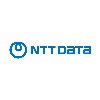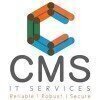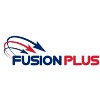12 Avotima Technologies Jobs

Enterprise Architect - BFS
Avotima Technologies
posted 12d ago
Job Role Insights
Key skills for the job
Job Description
Avotima Technologies is looking for Enterprise Architect - BFS to join our dynamic team and embark on a rewarding career journey The primary role of an Enterprise Architect is to create and maintain a holistic view of an organization's current state and desired future state.
They analyze the organization's structure, business processes, systems, and technologies to identify areas of improvement and create a roadmap for transformation.
This involves understanding the organization's business objectives, strategies, and operational needs, as well as assessing the current IT infrastructure and capabilities.
Enterprise Architects work closely with stakeholders, including business leaders, executives, and IT professionals, to define the enterprise architecture vision and strategy.
They facilitate discussions and collaborate with various teams to ensure that technology solutions are aligned with business goals and requirements.
Some key responsibilities of an Enterprise Architect include:Strategic Planning: Developing an enterprise architecture strategy that supports the organization's long-term goals and objectives.
Business Alignment: Aligning business processes, information, and technology to ensure that they support the organization's business objectives.
Architecture Development: Designing and documenting the enterprise architecture, including the target architecture, principles, standards, and guidelines.
Stakeholder Management: Collaborating with stakeholders to understand their needs, expectations, and concerns, and addressing them in the enterprise architecture.
Technology Evaluation: Assessing new and emerging technologies to determine their relevance and potential impact on the enterprise architecture.
Change Management: Guiding and facilitating the implementation of changes in technology, processes, and systems to achieve the desired future state.
Governance and Compliance: Establishing governance frameworks and ensuring compliance with standards, policies, and regulations.
Risk Management: Identifying and mitigating risks associated with the enterprise architecture, including security, data integrity, and operational resilience.
Communication and Education: Effectively communicating the enterprise architecture vision, strategy, and benefits to stakeholders and promoting awareness and understanding of the architecture across the organization.
They analyze the organization's structure, business processes, systems, and technologies to identify areas of improvement and create a roadmap for transformation.
This involves understanding the organization's business objectives, strategies, and operational needs, as well as assessing the current IT infrastructure and capabilities.
Enterprise Architects work closely with stakeholders, including business leaders, executives, and IT professionals, to define the enterprise architecture vision and strategy.
They facilitate discussions and collaborate with various teams to ensure that technology solutions are aligned with business goals and requirements.
Some key responsibilities of an Enterprise Architect include:Strategic Planning: Developing an enterprise architecture strategy that supports the organization's long-term goals and objectives.
Business Alignment: Aligning business processes, information, and technology to ensure that they support the organization's business objectives.
Architecture Development: Designing and documenting the enterprise architecture, including the target architecture, principles, standards, and guidelines.
Stakeholder Management: Collaborating with stakeholders to understand their needs, expectations, and concerns, and addressing them in the enterprise architecture.
Technology Evaluation: Assessing new and emerging technologies to determine their relevance and potential impact on the enterprise architecture.
Change Management: Guiding and facilitating the implementation of changes in technology, processes, and systems to achieve the desired future state.
Governance and Compliance: Establishing governance frameworks and ensuring compliance with standards, policies, and regulations.
Risk Management: Identifying and mitigating risks associated with the enterprise architecture, including security, data integrity, and operational resilience.
Communication and Education: Effectively communicating the enterprise architecture vision, strategy, and benefits to stakeholders and promoting awareness and understanding of the architecture across the organization.
Employment Type: Full Time, Permanent
Read full job description What people at Avotima Technologies are saying
What Avotima Technologies employees are saying about work life
based on 2 employees
Day Shift
Similar Jobs for you
Core JAVA Solution Designer (Disney Account)
2-6 Yrs
Mumbai, Bangalore / Bengaluru
Share an Interview
































